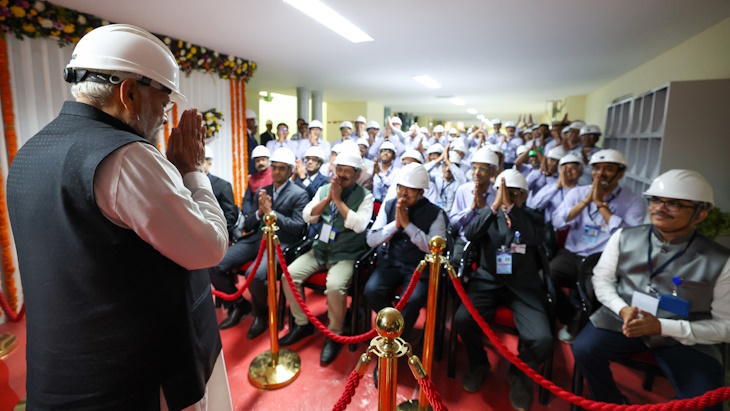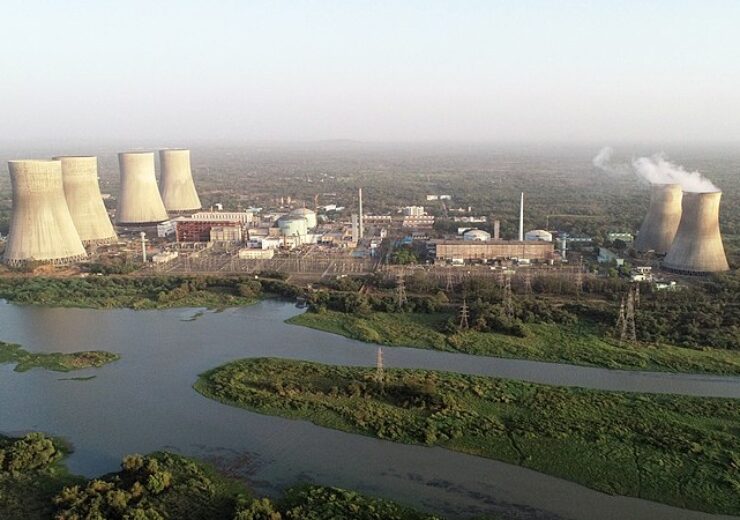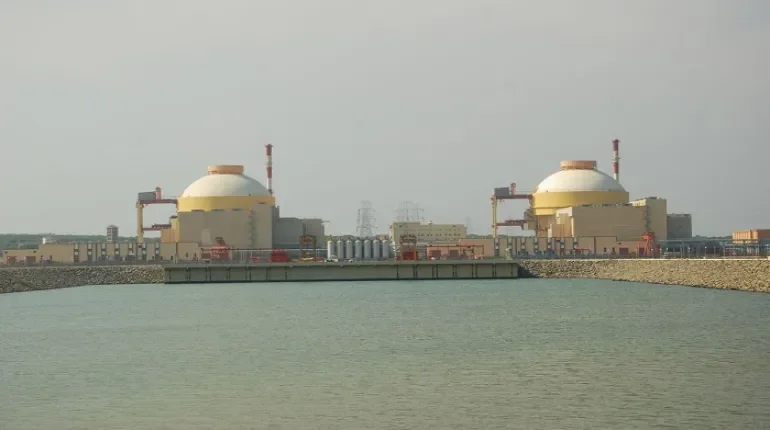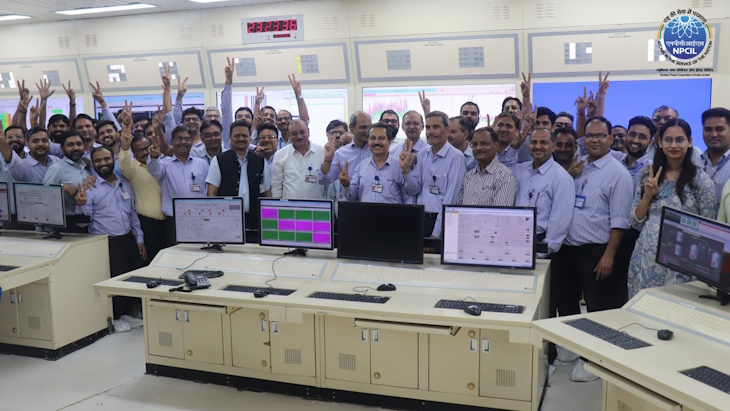India to seek nuclear investors as Kakrapar units inaugurated
23 February 2024
Prime Minister Narendra Modi's formal dedication to the nation of Kakrapar units 3 and 4 - the first Indian-designed 700 MWe pressurised heavy water reactors - took place days after reports that the Indian government is in talks with several private firms to invest in the country's nuclear sector.
 The Prime Minister addresses personnel at the Kakrapar plant during his 22 February visit (Image: Press Information Bureau)
The Prime Minister addresses personnel at the Kakrapar plant during his 22 February visit (Image: Press Information Bureau)
Kakrapar 3 and 4 are the first of a fleet of planned 700 MWe pressurised heavy water reactors (PHWRs): unit 3 achieved first criticality in July 2020, and the unit was connected to the grid in January 2021 and was declared to be in commercial operation in July 2023. Unit 4 reached first criticality in December and is now undergoing power ascension testing.
According to the Prime Minister's Office, the two units were built at a cost of "more than INR22,500 crore" (about USD2.7 billion - 1 crore is 10 million). "They are first-of-its-kind reactors and with advanced safety features comparable with the best in the world. Together, these two reactors will produce about 10.4 billion units of clean electricity per year and benefit consumers of multiple states like Gujarat, Maharashtra, MP, Chhattisgarh, Goa and UT of Dadra and Nagar Haveli and Daman and Diu," the PMO said in a press release ahead of the ceremony.
According to the Times of India, Modi inaugurated the two new reactors and "interacted with senior officials" including Nuclear Power Corporation of India Ltd (NPCIL) Chairman Bhuwan Chandra Pathak, as well as visiting the visited the main control room of the plant.
"Went to the Kakrapar Atomic Power Station. Two new Pressurised Heavy Water Reactors were dedicated to the nation," Modi said on X.
The next two 700 MWe PHWRs are under construction at Rawatbhata in Rajasthan, and the Indian government has sanctioned the construction of further units at Kaiga in Karnataka; Gorakhpur in Haryana; Chutka in Madhya Pradesh; and Mahi Banswara in Rajasthan.
Seeking investors
According to Reuters, government sources said India was planning to invite private firms to invest some USD26 billion in its nuclear energy sector, and is in talks with "at least" five private firms including Reliance Industries, Tata Power, Adani Power and Vedanta Ltd to invest around INR440 billion (USD5.30 billion) each.
Plans are not yet finalised, but the government hopes to use the investments to build 11,000 MWe of new nuclear capacity by 2040, the sources said. The plants would be built and operated by NPCIL, with the investing companies earning revenue from electricity sales from the plants. This hybrid plan would not require any amendment to India's Atomic Energy Act of 1962 - which prohibits private control of nuclear power generation - but would need to be approved by the Department of Atomic Energy, they said.
Only two government-owned enterprises - NPCIL and Bharatiya Nabhikiya Vidyut Nigam Limited (BHAVINI, set up to build and operate fast reactors) - are legally allowed to own and operate nuclear power plants in India. But the possibility of involving other public sector and private corporations in the country's future expansion plans is something that has been under consideration for some time. In 2016, the government amended the Atomic Energy Act to allow NPCIL to form joint venture companies with other public sector undertakings India in a move intended to help the state-owned company to secure funding for new projects, although the legislative change did not extend to private sector companies or foreign investors.
As well as further 700 MWe PHWRs, Indian plans envisage the construction of large reactors from overseas vendors, including further Russian-designed VVER reactors in addition to those already in operation and under construction at Kudankulam in Tamil Nadu. In August 2023, Minister of State Jitendra Singh also told the country's parliament that the government was considering options for small modular reactors, and looking at ways to allow the participation of the private sector and start-ups in such projects.





